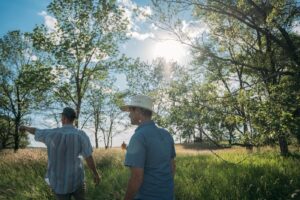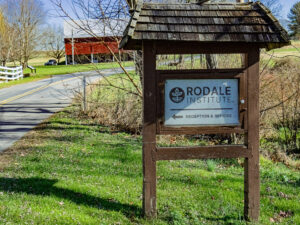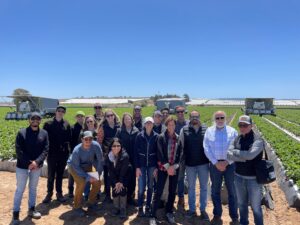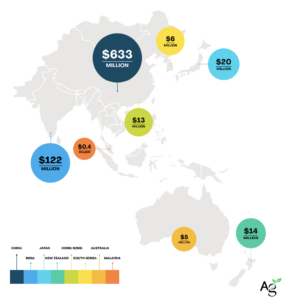Organic grain production in the US is not growing fast enough, according to a new report from the US Organic Grain Collaboration in partnership with the Organic Trade Association.
The amount of US farmland devoted to the production of organic corn, soybeans, wheat, oats, and barley grew by over 20% from 626,000 acres to 765,000 between 2008 and 2016. During roughly the same timeframe, however, the US organic livestock products industry nearly tripled in size from $1.2 billion in sales to $3.3 billion.
As the demand for organic products and ingredients continues to grow, increasing numbers of US farmers are interested in converting all or portions of their acres to organic production. Between 2015 and 2016, organic food sales increased by 23% to $7.6 billion in 2016, while the number of organic farms increased by just 11%. The US is making up for the shortfall with imports from overseas countries including Turkey, the UK, India, Turkey, and Argentina.
Barriers to Organic Conversion
There are many barriers to entry that make converting to organic a challenging proposition for farmers, however.
Before a farm can be certified organic, it must use organic farming practices for three years, according to the USDA’s National Organic Program requirements. This means that the farmer must incur the expense of the transition as well as any increased expenses of organic production without being able to capture the price premium that certified products bring.
There’s also the educational barrier.
“The biggest challenge for farmers is the fact that conventional production is mainly a plug-and-play system: if I have this problem, I use this product. Whereas organic production requires more intricate management and you need to have a different set of management skills. It requires you to observe everything because everything is interrelated: pollinators, soil health, wildlife, nearby water sources, etc. It’s a big leap and it can feel like a lot to learn,” Zoe Schaeffer, a media relations specialist for organic agricultural research service Rodale Institute, told AgFunderNews.
Rodale’s Midwest Organic Center
Rodale wants to help recently announcing plans to open a Midwest Organic Center (MOC) in Iowa to provide farmers in the row crop belt with more information and resources regarding organic production. Located at the Indian Creek Nature Center in Cedar Rapids, Iowa, the MOC will conduct research on regenerative organic farming methods while providing educational support and resources to help farmers implement those practices. The goal is to expand the amount of organic acreage in the Midwest while exploring the differences between conventional and organic farming methods in the region’s unique climate.
Rodale currently operates a 333-acre certified organic trial farm in Pennsylvania, which is a vastly different growing climate compared to other farm-heavy areas in the US such as Iowa. Duplicating its research in the Midwest will help deepen its understanding of organic production.
The number of certified organic farms in the US increased by 11% between 2015 and 2016, according to USDA data, bringing the total amount of certified acres to 5 million. California led in both categories, with 2,713 certified farms and 1.1 million acres, comprising 21% of total US certified organic land.
California farmers may have the highest rates of conversion, but they aren’t the only operators considering organic production.
“We are seeing an increased interest in organic methods all over the place, including the Midwest,” Schaeffer adds. “Bridging the conventional gap is definitely a challenge, but we are so encouraged by how much interest there is. We wouldn’t go to the Midwest if we didn’t hear a need from so many farmers interested in or ready to transition to organic who need one last piece of the transition puzzle. We hope to be that last piece.”
In addition to the three-year production requirement and gaps in education about organic management practices, some farmers are skeptical about whether the conversion costs will be recuperated through premium prices and have apprehensions about more expensive inputs and heavier labor demands, Schaeffer adds.
And while many conventional farmers are well versed in agtech tools, particularly those deployed for precision agriculture such as the variable application rate of seeds and inputs, these tools are not always adapted or relevant for organic farming.
“The organic supply chain has become more mature and we see more dedicated organic grain handlers that weren’t there a few years ago,” Tom Rabaey, a research agronomist for General Mills’ agriculture research team, told AgFunderNews. “But one of the things we struggle with is decision support software for organic growers. They can use the same tools like variable rate seeding technology or yield monitoring, but where a conventional farmer might say a crop needs more fertilizer, an organic farmer might say it needs a different cover crop.”
Agtech for Organic Farming?
On the input side, there are some obvious biotechnologies providing farmers with suitable organic alternatives to conventionally used products such as chemical pesticides. Biopesticide makers Marrone Bio’s and Aphea.Bio and nitrogen-fixing microbe producer Pivot Bio are three examples.
There is also a bevy of technologies focused on growing crops indoors hydroponically which still count as organic, despite a major rift in the organic industry over whether soilless hydroponic operations can be certified organic. The National Organic Standards Board rejected a proposal in November 2017 that would have disallowed hydroponics and aquaponics from being certified organic,
But when it comes to digital tools for outdoor farmers to use in the transition, there are few options out there. AgriSecure is a Nebraskan startup that helps row crop farmers transition to organic farming by providing a farm management software program to track compliance and help farmers make management decisions about their organic farms. The co-founders identified the need for their platform when they were making the transition to organic themselves.
“We really struggled with the availability of information and support we could get, so we created a resource tool that takes a lot of the work involved with recordkeeping, certification, knowledge, identifying inputs, and putting together budgets off their plates,” co-founder J.P. Rhea told AgFunderNews. A farmer by trade, Rhea operates a large-scale organic farm with his brothers in Nebraska.
“What’s unique about the software is that its designed around compliance. We also have an advisory service where we provide a lot of knowledge that takes a lot of the burden off the grower.”
AgriSecure and FBN See the Opportunity
AgriSecure’s story is a classic example of necessity being the mother of invention, but it also highlights the unique set of challenges that organic growers face. The compliance piece is far more intricate than what conventional growers face and a primary reason that many growers stick to conventional production. With the increased demand for organic products and ingredients including snowballing interest at the big food level, however, it’s hard to understand why more tech companies haven’t created dedicated products to assist organic farmers.
“Organic row crop production is relatively small compared to conventional row crop production; there are only about 200,000 acres of organic corn (compared to 90 million acres overall). So, it hasn’t attracted a ton of attention from larger tech companies. There just aren’t enough large-scale organic farmers to get tech companies’ attention,” Rhea explains. “What’s much more common is utilizing the existing technologies in organic farming. Outside of the specific need around extremely detailed recordkeeping, a lot of the tools we need are already out there, they just have to be applied in different ways.”
But a big challenge with existing digital decision support tools is that they often respond to problems after they’ve taken hold on the farm; organic production requires a greater emphasis on planning and staying ahead of problems, according to Rhea.
Farmers Business Network, the ag data sharing platform and agribusiness marketplace, recognizes the opportunity in organics and invested in AgriSecure in July 2018 to try and help its members take advantage of the industry’s premium pricing.
“There’s a total mismatch existing between the fact that we are sitting in some of the most fertile corn and soybean ground in the world but the US is still importing a large amount of organic corn from places like Romania, India, and Turkey,” Baron told AgFunderNews. “Obviously, there’s a big opportunity for US farmers. For us, this is a really important option to bring to our members. What FBN can do for AgriSecure users is to provide support around the grain merchandising, buyer access, and organic inputs acquisition components.”
For Baron, the case for technology in organics is even more compelling than in non-organic production based on the much higher level of price sensitivity that organic producers experience.
“Say you are growing GMO corn in Illinois averaging 200 bushels per acre. If you are able to achieve a 1% yield gain at a price of let’s say $3.50 per bushel, that’s a two bushel gain yielding $7. If you are an organic producer averaging 100 bushels per acre and you get a 1% yield gain at an approximate price of $10 per bushel, you are now making $10 more per acre for that 1% gain,” he explains. “Your upside is so much greater if you can find gains, so your incentive to find new practices and to deploy new technologies is very high, whereas if you are growing GMO corn, getting those marginal field gains in a system that is already highly optimized requires an enormous amount of work for decreasing returns.”
Baron sees opportunities across the board for organic-specific technologies as FBN works to make organics easier for growers. Based on the higher incentive of organic growers to chase a few extra bushels per acre, even production-agnostic technologies would benefit from targeting organic growers in their marketing.
A Growing Conversion Support Ecosystem
Farmers interested in making the switch may be short on organic-specific tech tools to ease the transition, but there are quite a few companies and nonprofits stepping up to the plate to provide transition resources.
As a major buyer of grain-based ingredients, General Mills has been active in the organic support space, serving as a partner on the US Organic Grain Collaboration report. One of the report’s recommendations to improve domestic organic grain production is to increase the number of farmer networks for organic production and to provide more educational resources.
General Mills’ Pivot and Grow program offers a range of online resources to help cereal growers shift to organics, while it helped transition 34,000 acres of farmland in South Dakota to organic production. In 2016, it announced a similar transition agreement with Organic Valley, the largest organic cooperative in the US, to help dairy farms convert to organic dairy production.
“We financially support a lot of organic research efforts across the Northern Plains where we source cereal grains like oats, wheat, and oilseed crops,” added Rabaey. “We see the demand for these ingredients and we want to make sure we have ample production of those grains. We form partnerships with ingredient suppliers to foster some of those practices or transition times to move to organic if need be in that channel.”
Organic food and drink company Clif Bar just announced the launch of Clif Ag Fund, a new initiative intended to help increase the economic resilience of organic farmers in its supply chain. It’s providing $500,000 in seed funding for a $10 million wind energy program that will allow farmers to lease a small wind turbine from United wind to provide their electricity needs.
Costco, the largest organic products retailer in the US, has provided financing to help farmers purchase land so they can ramp up their organic production and just a few days ago it confirmed rumors that it is considering setting up an organic farm in Hawaii to supply its island state market with locally grown produce in lieu of shipping it overseas from the mainland.
















Beyond price parity, CEA must focus more on consumer demand to truly scale